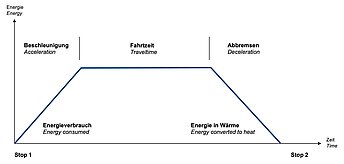How are the CO2 calculations done ?
The calculator determines how much CO2 is saved under your operating conditions if you use lightweight components. To do this, you define the value of weight savings in kilograms and your framework conditions. As a result, you will receive the CO2 savings in tons of CO2 per year. The savings in euros refer to the entire value chain from energy generation to consumption. Therefore, these are the hidden costs that are factored in by the operator from energy generation.
Parameters:
Weight Savings:
This is the central theme. Enter here the value by which you want to make the vehicle lighter.
Travel Time between 2 Stops:
How long does the vehicle travel between two stops, including acceleration and braking. Example: Subway 30 seconds, long-distance: 2 hours.
Daily Operating Hours: How many hours is the vehicle in operation daily.
Annual Operation: How many days does the vehicle operate in a year.
Optimizable CO2 Share:
The "Optimizable CO2 Share" considers how clean your current energy usage is to move the remaining mass (before the savings/value of weight savings).
In plain language, it calculates how much CO2 is generated/emitted in percentage terms to move the mass of the desired weight savings. The percentage starting from 0.1% creates comparability.
So, the percentage for brown coal electricity is certainly higher than for solar power. However, both can be represented here.
Fleet Size: If you want to see the results for your fleet, set your fleet size here. The value 1 reflects the values for one vehicle.
CO2 Price per Ton: If you want to determine future savings based on a CO2 price per ton, set your desired parameter in euros here. The calculator will then determine the values for the entire CO2 savings.
